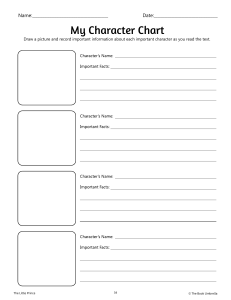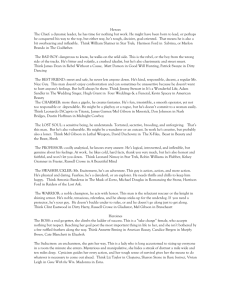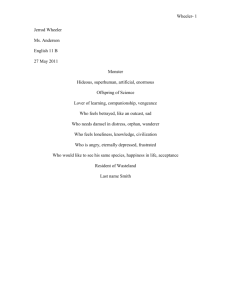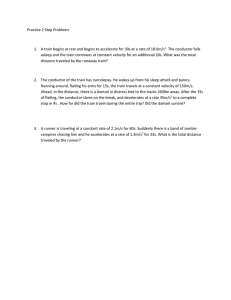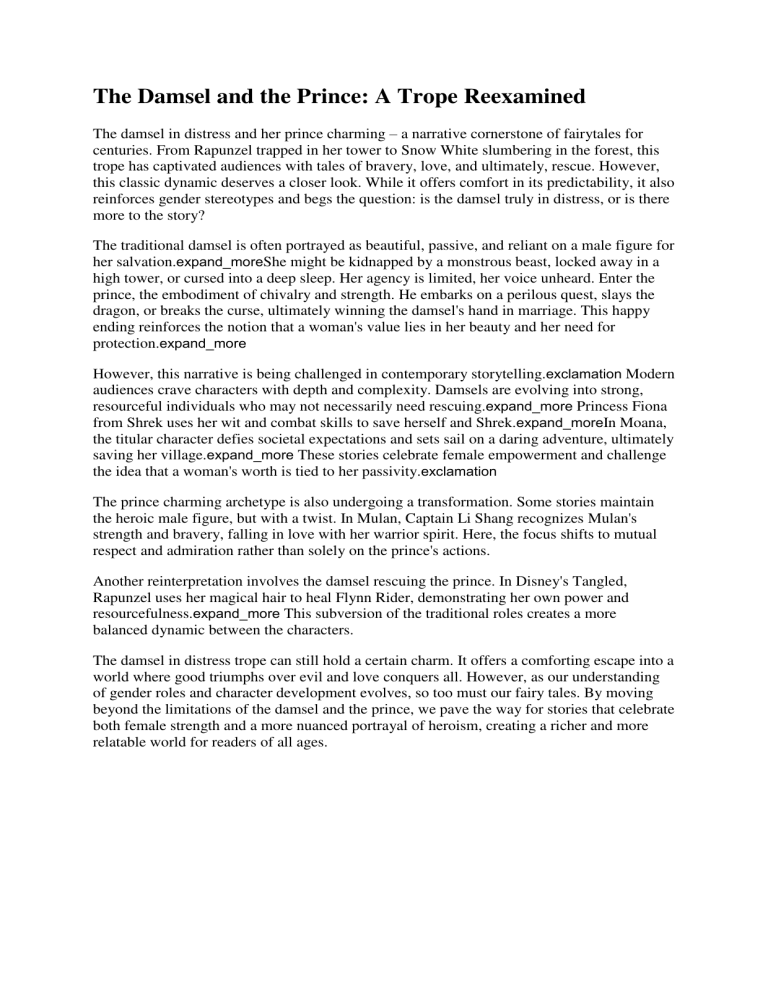
The Damsel and the Prince: A Trope Reexamined The damsel in distress and her prince charming – a narrative cornerstone of fairytales for centuries. From Rapunzel trapped in her tower to Snow White slumbering in the forest, this trope has captivated audiences with tales of bravery, love, and ultimately, rescue. However, this classic dynamic deserves a closer look. While it offers comfort in its predictability, it also reinforces gender stereotypes and begs the question: is the damsel truly in distress, or is there more to the story? The traditional damsel is often portrayed as beautiful, passive, and reliant on a male figure for her salvation.expand_moreShe might be kidnapped by a monstrous beast, locked away in a high tower, or cursed into a deep sleep. Her agency is limited, her voice unheard. Enter the prince, the embodiment of chivalry and strength. He embarks on a perilous quest, slays the dragon, or breaks the curse, ultimately winning the damsel's hand in marriage. This happy ending reinforces the notion that a woman's value lies in her beauty and her need for protection.expand_more However, this narrative is being challenged in contemporary storytelling.exclamation Modern audiences crave characters with depth and complexity. Damsels are evolving into strong, resourceful individuals who may not necessarily need rescuing.expand_more Princess Fiona from Shrek uses her wit and combat skills to save herself and Shrek.expand_moreIn Moana, the titular character defies societal expectations and sets sail on a daring adventure, ultimately saving her village.expand_more These stories celebrate female empowerment and challenge the idea that a woman's worth is tied to her passivity.exclamation The prince charming archetype is also undergoing a transformation. Some stories maintain the heroic male figure, but with a twist. In Mulan, Captain Li Shang recognizes Mulan's strength and bravery, falling in love with her warrior spirit. Here, the focus shifts to mutual respect and admiration rather than solely on the prince's actions. Another reinterpretation involves the damsel rescuing the prince. In Disney's Tangled, Rapunzel uses her magical hair to heal Flynn Rider, demonstrating her own power and resourcefulness.expand_more This subversion of the traditional roles creates a more balanced dynamic between the characters. The damsel in distress trope can still hold a certain charm. It offers a comforting escape into a world where good triumphs over evil and love conquers all. However, as our understanding of gender roles and character development evolves, so too must our fairy tales. By moving beyond the limitations of the damsel and the prince, we pave the way for stories that celebrate both female strength and a more nuanced portrayal of heroism, creating a richer and more relatable world for readers of all ages.
